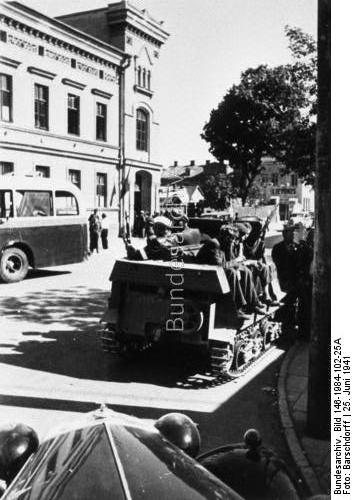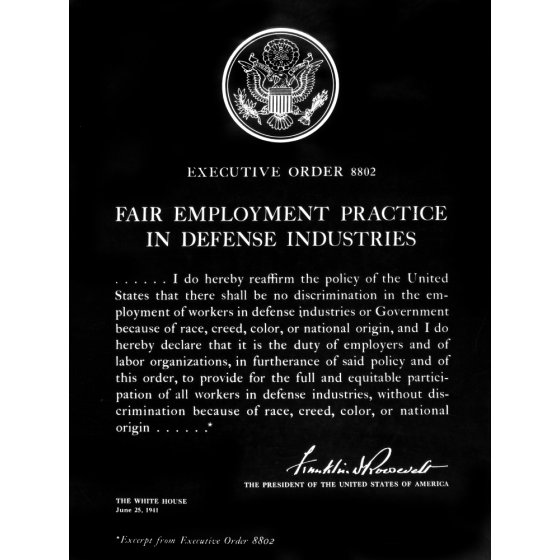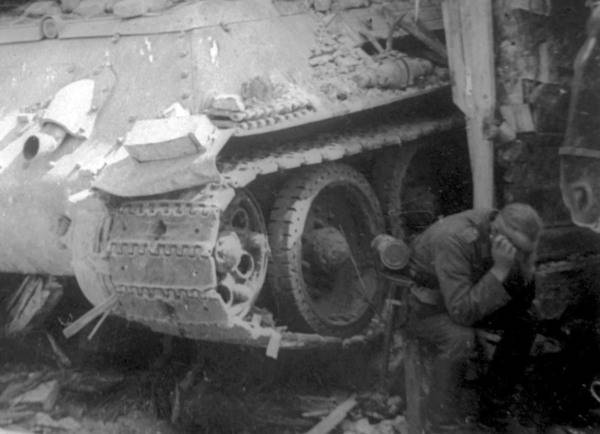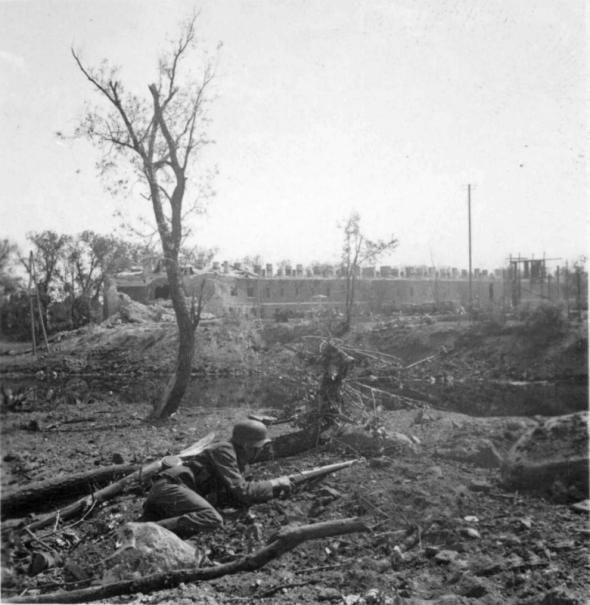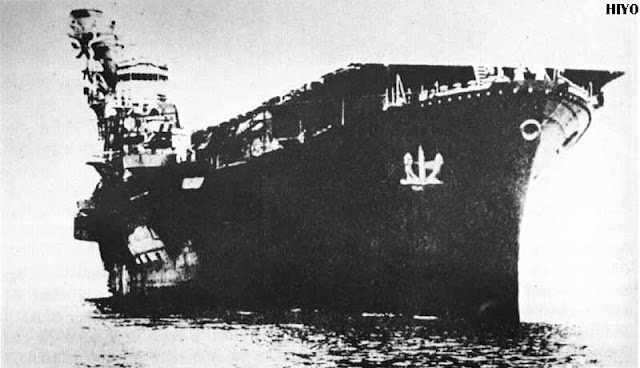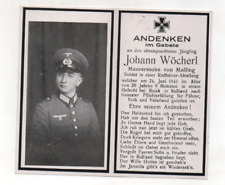Tuesday 15 July 1941
 |
| A blown bridge at Kovno (Kaunas), Lithuania, 15 July 1941. |
In the Far North sector, Finnish VI Corps advances toward Lake Ladoga from the northeast and continues clearing resistance on the eastern shore of the Jänisjärvi Lake (north of Lake Ladoga). The defending Soviet 7th Army opposing VI Corps is outnumbered and over-matched and struggles to maintain a front north of Lake Ladoga. However, Finnish VII Corps has been having much more trouble advancing parallel to VI Corps on the western shore of Jänisjärvi Lake, and only today does it run up against the main Soviet fortifications. The Finns hope that both Corps will be able to round the lake and meet to the south of it and surround the remaining Soviet defenders, but the two Finnish Corps are operating completely independently and must both overcome their respective opponents for that to happen. An advance to Lake Ladoga also would split the Soviet defenders.
In the Army Group North sector, Soviet 11th Army counterattacks against German 4th Panzer Group in the Lake Ilmen region. The Soviet forces are ravaged, but buy time for Soviet forces further back to build fortifications. In Leningrad, citizens begin building tank traps and other fortifications.
In the Army Group Center sector, the German 29th Motorized Division (General Walter von Bolternstern) of 47 Panzer Korps, supported by 17th Panzer Division, reach the outskirts of Smolensk by 04:00 and take the heart of the city by dark. Soviet 16th Army remains in the suburbs and launches counterattacks, which results in house-to-house fighting. This is a rarity so far during Operation Barbarossa, as the panzers so far have been able to stick to the roads and follow them east toward Moscow. German 7th Panzer Division and 20th Panzer Division bypass Smolensk and reach Yartsevo, to the city's east. Isolating the Soviet forces around Smolensk is more significant in the long run than actually taking the city, and to do both in the same day is a phenomenal achievement. General Hoth's 3rd Panzer Group takes Nevel.
In the Army Group South sector, the Battle of Uman begins when General Ewald von Kleist’s 1st Panzerarmee separates the two Soviet sectors of the front south of Kyiv and north of Vinnytsia by capturing Berdychiv. General Karl-Heinrich von Stülpnagel’s 17th Field Army advances to the south of Uman and General Eugen Ritter von Schobert’s 11th Field Army advances northward from the Romanian border. The plan is to encircle large Soviet formations in the vicinity of Kyiv, but the Soviets wrongly interpret the moves as part of an advance to the Dniepr between Kyiv and Cherkasy and further to the east. Romanian troops advance toward Kishinev.
 |
| Luftwaffe ace Werner Mölders. |
Hartwig von Ludwiger is awarded the Knight's Cross of the Iron Cross on 15 July 1941 as Oberstleutnant and commander of Infanterie-Regiment 83 of the 28th Infantry Division for bravery in the vicinity of Smolensk.
 |
| The US 1st Armored Division on July 15, 1941. It is celebrating the first anniversary of its founding, hence the giant cake. |
Battle of the Baltic: The German 3rd Motor Torpedo Boat Flotilla (S-47, 54, 57, and 58) attacks a Soviet destroyer in the Bay of Riga, but the destroyer gets away.
Just south of Finland, Soviet commandos invade the small Finnish island of Morgonland. The island is important to the Soviets because properly garrisoned, it could restrict access to their port of Hanko on the Finnish mainland, which is still holding out. The Finns only have five lightly armed men on Morgonland, and they are captured and sent to Kazakstan. One survives to see Finland again.
Soviet Zhytomyr-class river monitor Vinnytsia is operating in the Berezina River when it is hit by German field artillery. The master runs the ship aground to avoid sinking, then the crew later scuttles on the 16th to avoid capture.
 |
| "Two lieutenants, one a Royal Navy Reserve the other a Royal Navy Volunteer Reserve use coded tags to plot the positions of convoys on a large wall map of the British Isles and North Atlantic. This map is in the Operations Room of Derby House, Liverpool, the home of Western Approaches Command, July 1941" (© IWM (A 4545)). |
The Luftwaffe bombs and sinks 468-ton British freighter Farfield about five nautical miles off South Stack in the Irish Sea. There are eight deaths, but one passenger, a naval rating, survives.
Royal Navy 2938-ton landing ship HMS Prince Philippe collides with 7463-ton freighter Empire Wave west of Scotland and sinks. There is one death.
Swedish freighter Iris collides with RFA Blue Ranger in the Firth of Forth about 4 nautical miles off Pladda, Buteshire, UK, and sinks.
Royal Navy minelayer Teviotbank lays minefield SN.21A in the North Sea.
Convoy SL.81 departs from Freetown bound for Liverpool.
Canadian destroyer HMCS Huron is laid down at Vickers-Armstrong Ltd. in Newcastle-on-Tyne.
US aircraft carrier USS Lexington (CV-16, currently named the USS Cabot) and anti-aircraft cruiser Oakland are laid down. The Cabot will be renamed the Lexington after its namesake, CV-2, is lost at the Battle of the Coral Sea.
U-507 is launched, U-223, U-224, U-623, and U-624 are laid down.
 |
| The Imperial Japanese Navy destroyer Maikaze on 15 July 1941. |
Royal Navy submarine HMS P.33 torpedoes and sinks Italian freighter Barbarigo about 8 nautical miles (15 km) south of Pantelleria.
Royal Navy submarine HMS Taku sinks 270-ton Italian patrol boat Vincenzo Padre east of Ras Auegla, Libya.
The Luftwaffe attacks two Royal Navy lighters A.10 and A.11) while they are sailing to Tobruk. The planes badly damage A.10 east of Tobruk and later sinks while in tow. There is one death and three wounded in A.10 and one wounded in A.11.
The Regia Aeronautica raids Malta several times after dark, but the bombs are dropped virtually at random. There are a few wounded soldiers. A Maryland reconnaissance plane fails to return from a mission and the crew of three deaths. Also, a crewman on a Blenheim that is attacking a Tripoli convoy perishes when hit by anti-aircraft fire.
Battle of the Black Sea: The Red Air Force bombs and sinks Romanian Navy minelayer NMS Aurora at the mouth of the Sulina branch of the Danube, the easternmost part of Romania.
Battle of the Pacific: Two Soviet submarines, M-49 and M-63, hit mines and sink off Vladivostok.
 |
| Japanese light cruiser Kashii, July 15, 1941. |
Italian forces are sent to relieve Cetinje, which is besieged by the insurgents. After eight hours of battle, the insurgents are victorious and kill 70–80 Italian soldiers and officers, wound 260, and capture the remaining 440 Italians.
At Virpazar, rebels capture several small boats. They intend to use them to trade with Italian authorities in Scutari.
Spy Stuff: The Japanese are keeping a close eye on US military activity all across the Pacific. Today, the Japanese Embassy in the Philippines reports to Tokyo about the status of construction at the Cavite military base due to an electricity outage caused by bad weather.
 |
| Howard Florey. |
While they are still only a theoretical concept, atomic bombs are described in great detail and with precise accuracy in the MAUD report. The report includes a concrete proposal for building atomic weapons, including cost estimates and how long the project could take. It states in part:
We have now reached the conclusion that it will be possible to make an effective uranium bomb which, containing some 25 lb of active material, would be equivalent as regards destructive effect to 1,800 tons of T.N.T. and would also release large quantities of radioactive substance, which would make places near to where the bomb exploded dangerous to human life for a long period.Vannevar Bush has reviewed drafts of the report but awaits the receipt of an official final copy before taking any action.
British researcher Howard Florey and his graduate student assistant, Norman Heatley, arrive at the Northern Regional Research Laboratory in Peoria, Illinois. They bring with them freeze-dried mold cultures and information that will lead to the mass production of Penicillin.
 |
| A bloodless bullfight at an unknown location on July 15, 1941 (AP Photo). |
Mexico and the US sign an agreement today instituting an embargo of Mexican exports outside the Americas. This obviously is directed at Japan, given that Japan relies heavily on Mexican mercury and other items.
Yoshiaki Miura, Japanese Minister in Mexico City and who also happens to be the head of the Japanese Intelligence Network in Mexico and Central America, calls a meeting of local Japanese businessmen to discuss the situation. They decide to test the Mexican position by requesting approval to export goods already under contract to Japan. Miura decides that, if Mexico refuses to approve the exports, Japan, in turn, will take steps against Mexico. These include stopping the export from Japan to Mexico of rayon, which Mexico greatly needs (it has no other source of supply). Japan also would refuse the use of Japanese shipping to Mexico.
The upshot is that Minister Miura has his agents successfully work a deal with Mexico's Economic Minister: Japan will trade 20,000 cases of rayon for 8,000 bottles of Mexican mercury despite the embargo. Miura sends the proposed deal to Tokyo for approval.
Anglo/US Relations: The US Marine Corps activates its Marine Detachment at the American Embassy in London, England.
 |
| Commissioning Ceremony, NAS Argentia, 15 July 1941. |
US Military: Having finally been supplied with Prestone antifreeze for their P-35As in the Philippines, the pilots of the 3rd and 20th Pursuit Squadrons finally complete their qualifications on the fighter.
The US sets up a base at Argentia Bay, Newfoundland. Opening today is the Argentia US Naval Air Station and the US Naval Operating Base.
German Military: Throughout the war, working on the front lines is extremely hazardous for German war correspondents and photographers. Today, two men in this capacity perish, namely, Max Kretzer, 87, German writer; and Walter Ruttmann, 53, German film director.
Lieutenant General Erwin Rommel is named the official commander of Panzer Group Afrika.
Italian Military: Inigo Campioni is appointed the governor of the Italian Aegean Islands, also known as the Italian Dodecanese.
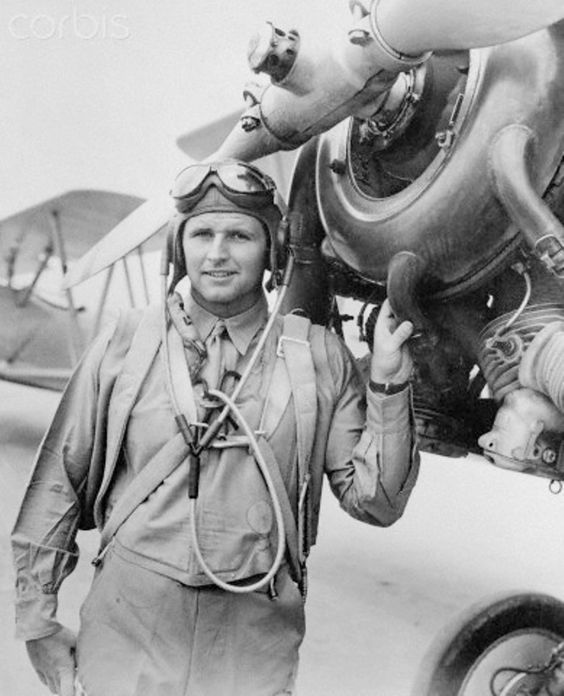 |
| Joseph P. Kennedy in his pilot's uniform while training at the Squantum, Massachusetts Naval Air Station, 15 July 1941. |
Libya/Syria: Having conquered Syria and Lebanon from the Vichy French, the British offer local people self-rule. This fulfills a promise made by Free French leader Charles de Gaulle.
American Homefront: In the final game of a series against the Chicago White Sox at Comiskey Park, Chicago, New York Yankee Joe DiMaggio goes 2-4 against White Sox hurler Eddie Smith. This extends DiMaggio's hitting streak to 55 consecutive games, extending his major league record.
 |
| Look magazine, 15 July 1941, features an article by Mrs. Roosevelt. |
July 1941
July 1, 1941: US TV Broadcasting Starts
July 2, 1941: MAUD Report
July 3, 1941: Stalin Speaks
July 4, 1941: Pogroms in Eastern Europe
July 5, 1941: Germans on Schedule
July 6, 1941: Australians Attack Damour
July 7, 1941: US Marines in Iceland
July 8, 1941: Flying Fortresses In Action
July 9, 1941: British Take Damour
July 10, 1941: Sword and Scabbard Order
July 11, 1941: Cease-fire in Syria and Lebanon
July 12, 1941: Anglo/Russian Assistance Pact
July 13, 1941: Uprising in Montenegro
July 14, 1941: Katyusha Rocket Launchers in Action
July 15, 1941: Smolensk Falls
July 16, 1941: Stalin's Son Captured
July 17, 1941: Heydrich Orders Mass Executions
July 18, 1941: Twin Pimples Raid
July 19, 1941: V for Victory
July 20, 1941: The Man Who Wouldn't Shoot
July 21, 1941: Moscow in Flames
July 22, 1941: Soviet Generals Executed
July 23, 1941: Secret Plan JB 355
July 24, 1941: Operation Sunrise
July 25, 1941: US Naval Alert
July 26, 1941: Italian E-Boat Attack on Malta
July 27, 1941: MacArthur Returns
July 28, 1941: Auschwitz Exterminations
July 29, 1941: Rescue From Crete
July 30, 1941: Raid on Petsamo and Kirkenes
July 31, 1941: Final Solution Order
2020




